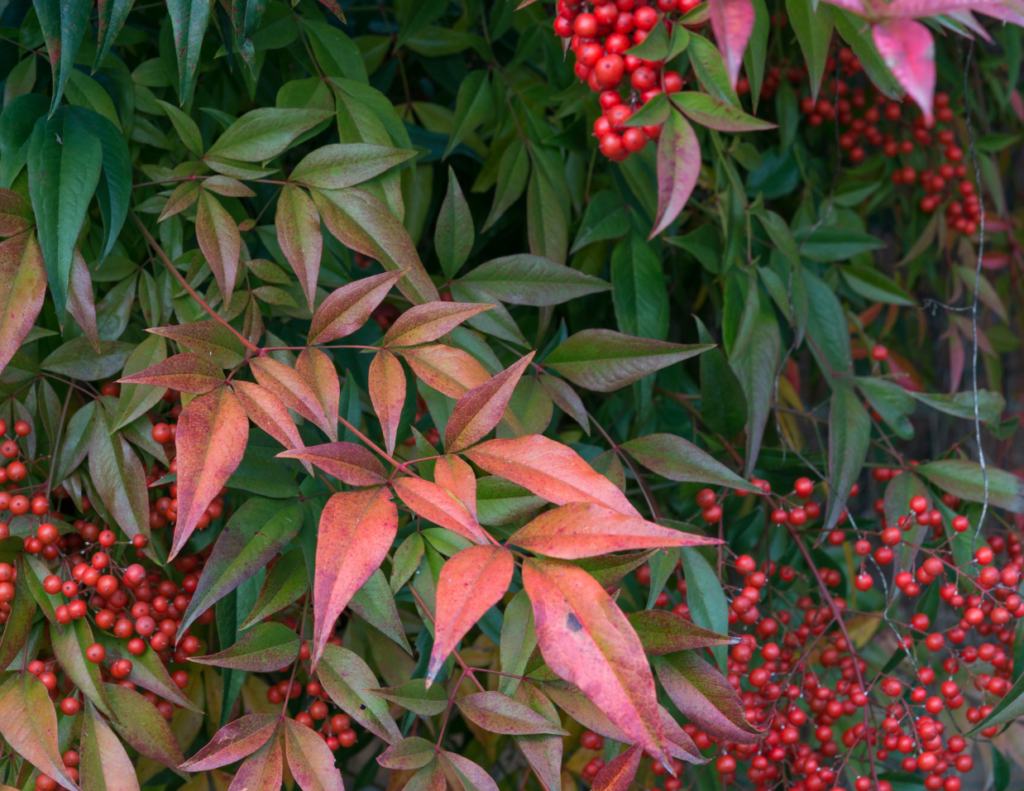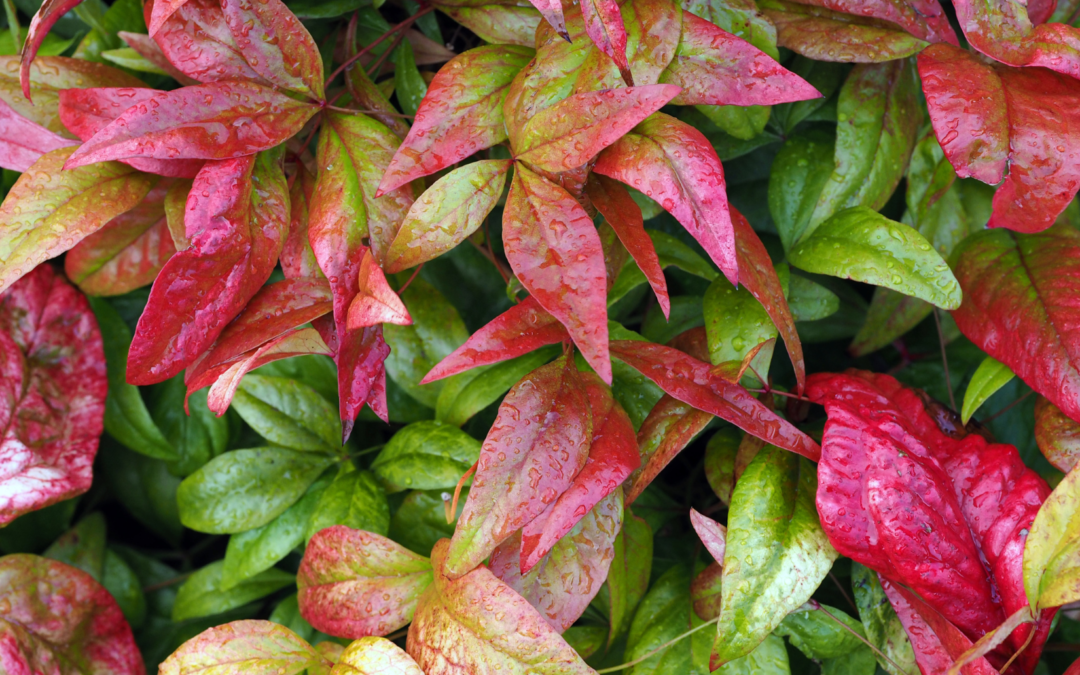If you didn’t do your homework researching plants before you bought them this spring, are you second-guessing some of your purchases right about now? Are you looking around your landscape and wondering if you could warm up to the look of brown plants in your yard? Guess what? You don’t necessarily have to.
Bar any extreme freezes or winter snowstorms, the following plants give you consistent, year-round interest in your landscape. They are also plants that are recommended by SAWS, which means they perform very well in our San Antonio climate and generally need very little maintenance.
4 Evergreen Landscape Options for San Antonio

Mountain Laurel:
- 10’-15’ avg. mature size, large shrub/small tree
- Full sun, Part Sun
- Drought/Cold Tolerant
- High Deer Resistance
- Pollinator Attractor, Fragrant
- Will grow in a natural, dense, shrubby form but can be pruned to a few strong trunks with gorgeous canopy.
Most of us that have lived in San Antonio during any spring have encountered a Mountain Laurel in some way or another. You’ve either been drawn in by the gorgeous color of its cascading purple drupes when in bloom, or you’ve caught a whiff of the sweet, heady scent of those same blooms that are reminiscent of grape Kool-Aid.
But have you noticed it during winter? How it stands with a deep-green canopy, unassuming, but generously offering you some color through the cold while perennials around it are hibernating until warm weather to offer theirs? Although slow growing, once this native specimen has been planted in your landscape, it proves to be a long-standing, reliable native beauty.

Nandina:
- 3’- 4’ avg. compact shrub size, 1’- 2’ dwarf
- Full Sun, Part Sun
- Drought/Cold Tolerant
- Wildlife food source
- Landscape uses depending on variety: borders, mass plantings, groundcovers, even containers.
Nandina used to have a bad rap due to their underground runners that, well, run. If you ever decide to get rid of one in your landscape, a standard nandina usually has a different idea in mind. (Buyer beware.) However, the improved compact varieties and dwarf varieties of nandina have created a whole new ball game. They do not get out of control with runners and they are a great size to use multiple ways in your landscape.
Compact nandina come in all the dazzling fall foliage hues the standards come in. Brilliant shades of red, orange, purple, and yellow, depending on which variety you choose. Textured, delicate, bamboo-like foliage branches out from cane-like stems. Many nandina also produce *winter berries.
*Nandina berries are toxic to cedar waxwings because they contain cyanogenic glycoside, which can be deadly if eaten in large amounts. Unfortunately, these birds tend to do just that, and overeat the berries, so it is important to take preventive steps in order to avoid them.
To do this in San Antonio, Texas, it is best to prune nandinas in the wintertime, since that is when the berries are produced. By pruning away the berries and providing alternate food sources, the risk of cedar waxwings consuming the toxic berries can be significantly reduced.

Photo courtesy: Wildflower.org
Evergreen Sumac
- 6’-10’ tall shrub or small tree
- Sun to Part Shade
- Drought/Cold Tolerant
- Wildlife Food/Nectar Source
- Grows well in our limestone soils
- Landscape uses include: hedging, privacy screens, stand alone specimens.
While this native beauty is evergreen (somewhat…more about this later) as its name implies, it is also much, much more. Springtime rolls around and brings with it a pink tinge to its glossy, green foliage. On female plants, tiny inconspicuous flowers are clustered at the end of branches and are followed by berries that mature to a red color in fall. And just when you think it doesn’t get any better, after a frost the foliage is tinged with color once again but this time it’s maroon!
Now back to that “somewhat” thing I mentioned above when talking about its evergreen habit. A true evergreen doesn’t lose its leaves at all, and Evergreen Sumacs will drop their leaves after winter but in about a week or two, a new yield of leaves has been reinstated.

I would be remiss if I didn’t at least mention hollies in this article. Some produce berries, depending on the variety, but all will offer shiny, green, evergreen leaves that can really save your landscape from the winter doldrums. Hollies hold up through our San Antonio summers as well. There are so many varieties of hollies to choose from, I’m just going to share the link for a past blog on some of our favorites.
I hope this has given you a few ideas for incorporating some evergreen color into you landscapes. It only takes one brown, dull winter to have you craving green. Let’s make it happen this year.
~The Happy Gardener, Lisa Mulroy


How can you recommend Nandina when the berries are poisonous to birds?????
Thank you for your comment Anne. You brought to my attention that I mistakenly left out the disclaimer about toxicity for birds, Cedar Waxwings specifically. It has quickly been updated. I appreciate you feedback.
I almost breezed by the whole piece on Nandina.
I almost got angry that you were recommending that hateful, overgrown, invasive plant.
And then I realized you weren’t.
Thank you!!!! for sending us info about the new variety!! I’m happy to try some this year.
Now, how do I get rid of the 5 or 6 that were here when I bought the house? And how do I get rid of the runners coming under the fence from my neighbor’s nandinas?
I’m SO tempted to ROUNDUP the whole lot of them. And then I remember Roundup is carcinogenic.
I hope you accept this message with the humor with which it was intended.
Happy planting!
How about Esperanza and Lantana? I put in several of each in the fall, and they were doing well. Then the super-cold weather around Christmas hit. I covered them before the freeze with protective sheeting from Rainbow Gardens, but they are all brown now. I have watered them a bit to help them out, but they are all still brown and withering away. Will they recover?
Hi Brian,
Esperanza and Lantana both die back over the winter. Oftentimes through winter, even if we don’t have a really hard freeze, they still can look brown. It sounds like you did everything right by protecting them, so the answer is just to wait and see. You don’t really want to cut them back now as another freeze may head our way before spring. Watering them when needed is still a good idea as we still haven’t had much rain and are still considered to be in a drought. If you can deal with the brown for another month (or more if another freeze blows through), I bet those plants will come back from the roots for you. You’ll have to wait a few months to see, but they are generally reliable plants.